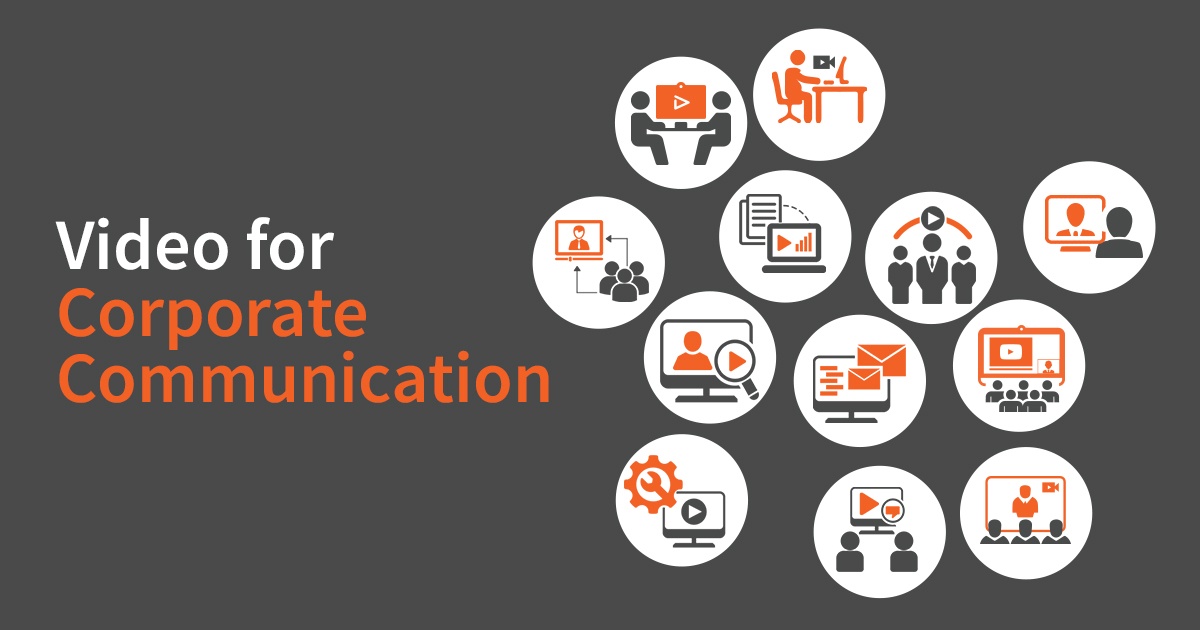The role of corporate communications has expanded significantly in a radically transforming enterprise digital landscape. The ongoing technological developments have had a profound impact on how organizations communicate and engage with all their stakeholders, including employees, customers, partners, investors, media and the public.
However, in a world of constantly growing digital chatter and a sea of digital information competing for people’s attention, organizations are finding it increasingly difficult to get the attention of its internal and external stakeholders alike.
What entails 21st century corporate communication
Corporate communications are pervasive within any organization today. With an increasing scope of responsibilities, professionals are at the center of all company wide communication, including corporate governance, internal messaging, crisis management, public relations, external communication, brand and reputation management, departmental realignment, as well as monitoring results of all communication activities. However, with a widening scope comes great pains, which, if not dealt with, could become catastrophic in managing a firm’s internal and external communication strategy.
Key challenges facing corporate communication professionals
The digital informational sphere has compelled certain changes to organizational communication dynamics, whose adoption poses significant challenges for communications professionals, some of which are as follows:
- Corporate stakeholders now demand greater transparency in the form of open, consistent, and quality communication and corporate governance combined with clear alignment of corporate goals with a stakeholder’s respective needs and challenges.
- A digitally enabled and empowered audience now expects all organizational communication to take place over digital mediums.
- Employees, especially millennials, who are averse to corporate hierarchies, now demand more personalized communication and direct accountability from a company’s top leadership.
- Social media has boosted the virality of any organizational news and could rapidly put a company’s global brand at risk in the case of a reputational crisis.
- Rising need for corporate security and ethical compliance means all employees constantly need to be educated on evolving technology challenges and adherence to ensuing regulations and practices.
- With a heightened need for participation, social networking and collaboration, millennials are driving social communication across organizations, thereby resetting the order of conventional corporate communications to more digitized, technology-enabled modes of communication.
- Despite the expansion of organizational communication roles, communication departments have not grown proportionately, resulting in greater pressure on fewer resources.
- Change or transition management following corporate restructuring requires extensive communication to ease employee fears, uncertainty and doubt.
- Today’s employees, especially millennials, are highly particular about the values and image of the company they work for, and organizations need to be all the more conscious about their managing their reputation and brand and the impact it has on the society and the environment.
- Wariness of large corporations and declining trust in top management amidst strong public sentiments regarding corporate greed and the establishment begs the need for greater humanization of corporations through visually engaging publicity of CSR initiatives and as well as direct accountability from corporate leadership.
- Budget cuts coupled with globalization has led companies to expand their presence around the world, which is in turn pushing communications team to adopt digital platforms for most communication activities.
Why enterprise video is the answer
The challenges facing communications departments may seem numerous, but they can be collectively resolved using enterprise video that is at the heart of all contemporary communications strategies. Following are 10 ways in which enterprise video helps solve organizational communication challenges:

Here's how an enterprise video platform helps you execute your communications strategy

How VIDIZMO meets all your corporate communication needs with an enterprise video streaming solution
In the 21st-century corporate communication needs have become diversely immense. With video playing a major role in all types of organizational communication, enterprises increasingly need a comprehensive video strategy administered through a robust video streaming solution that delivers video to all internal and external business stakeholders through a centralized platform that deliver both live and on-demand video to all user devices, browsers, and in any type of bandwidth conditions.
All such business video needs are delivered by VIDIZMO, a Gartner-recognized enterprise video platform that fulfills end-to-end video needs for all business communications. VIDIZMO is a comprehensive streaming video solution that empowers organizations to capture, ingest, stream, encode, store, process, and share all different types and format of video along with non-video digital media assets like audios, images, documents, graphical data, etc.
With enterprise-grade platform security and compliance, VIDIZMO delivers high-quality video content over the internet (cloud) or behind the firewall (on-premises) as well as a combination of both in a hybrid model. In a flexible platform, VIDIZMO provides single sign-on authenticated access to all internal and external business stakeholders in completely segregated channels or portals for different user groups or even various departments across the organizations. VIDIZMO also offers seamless platform integration with existing line of business applications like CMS, LMS, CRM, video conferencing systems, and other IT systems while also enabling video sharing to social media channels, company website or other external platforms.
To suit modern business video needs, VIDIZMO facilitates video delivery to all user devices, supports BYOD policies, allows easy video capture and end-to-end processing and viewing straight from VIDIZMO’s mobile application, and supports screen capture video for live or on-demand video streaming to an infinite number of user in any part of the world.
To know more about VIDIZMO you can visit our website
Or to learn more about different vendors, the market and important features, you can read our detailed guide on video platforms.
Posted by Rabeea Tahir
Rabea Tahir is Technology Content Strategist at VIDIZMO which is a Gartner recognized enterprise video content management system, to stream live/on-demand media to both internal and external audiences, on-premise, Azure or AWS cloud. VIDIZMO solutions are used by enterprises, government, local, state government, healthcare, law enforcement agencies, justice, public safety, manufacturing, financial & banking industry.




